#15 December 14, 2018
In the mountains of Kawakami village in Nara Prefecture, I participated in the "ritual" felling of Yoshino cedar trees (height 50m) which were planted 280 years ago. I heard that such a scale of logging hadn’t been conducted in more than a decade.
I was surprised that the people of the mountain referred to the felling of these large trees simply as "thinning". Traditionally, seedlings of Yoshino Cedar are planted at a surprising density of 1,000 trees per square meter and on a very steep slope. This high density of planting along with frequent thinning creates an amazingly beautiful and straight grain in the wood of these trees. As well, the threshold between the summer (light) grain and winter (dark) grain allows moisture to pass freely and maximizes respiration, making the wood very well suited for sake barrels. The technology of sake brewery was born and developed in Nara, and thanks to this cedar barrel, a unique collaboration between nature and humans began.
Sen no Rikyu, the founder and master of the Japanese tea ceremony, was aware of the subtlety of the grain of Yoshino cedars. Rikyu designed chopsticks called ranchu-bashi (made of cedar) which has sharpened tips on both ends. When inviting his guests, Rikyu would send someone to Yoshino to obtain this delicate tree. At the national stadium, now under construction, Yoshino cedar will also be applied in key areas of the interior. I imagine that Sen no Rikyu would understand the reason.
The timber-felling which I witnessed was mythically wondrous. To be present at the falling of such massive trees which lived over 280 years was extremely shocking and overwhelming. The people from this area even set up a temporary alter in front of the forest for prayer. A 6mm steel cable was tied high around the trees and it didn’t take even ten minutes until they were pulled down with a special chain saw (blade length of 130cm) to complete the work. They first cut out a triangle on the side of trunk, such that the trees fall perpendicular to the slope, rather than down into the valley. There is a special method in Yoshino called hagarashi (drying the leaves), which dries the fallen trees in place for six months to one year in order to acquire the cedar’s light and bright coloring. I learned that every point in the process of cultivation - from the dense planting, logging to drying – was a collaboration between the nature and humans.
When the big trees finally fell, the earth shook, causing a low vibration to echo through the mountains. My body trembled in resonance, and I was left in tears.
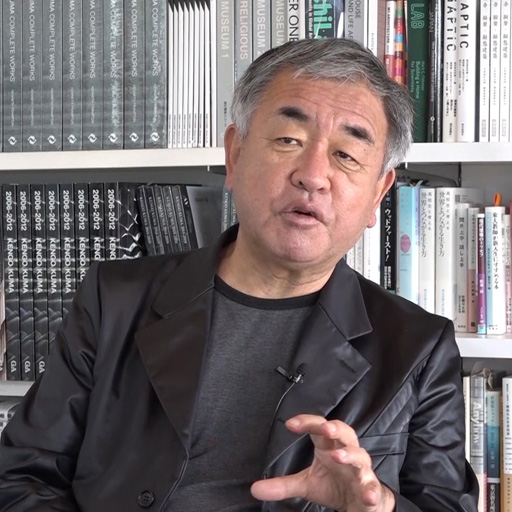
ProjectsTao
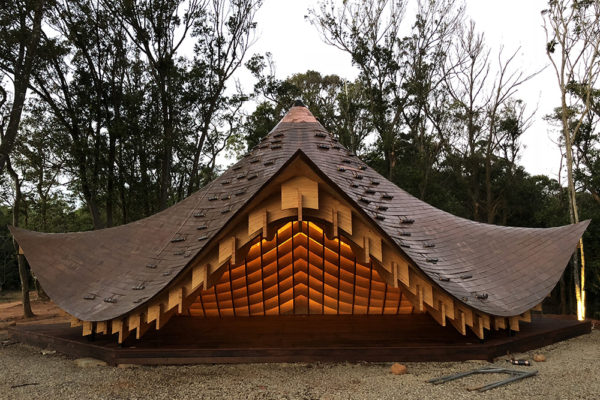 This is a Taoist temple devoted to the god of Taoism, Kikoku-shi, and located in the mountains of Shinpu, 70 km south of Taipei. Instead of placing the roof on top of a box, we simply placed this organic-shaped roof directly on the ground. By warping the edge of the roof that is pulled up from the g … Read More
This is a Taoist temple devoted to the god of Taoism, Kikoku-shi, and located in the mountains of Shinpu, 70 km south of Taipei. Instead of placing the roof on top of a box, we simply placed this organic-shaped roof directly on the ground. By warping the edge of the roof that is pulled up from the g … Read MoreProjectsTLDC Tsumiki Pavilion
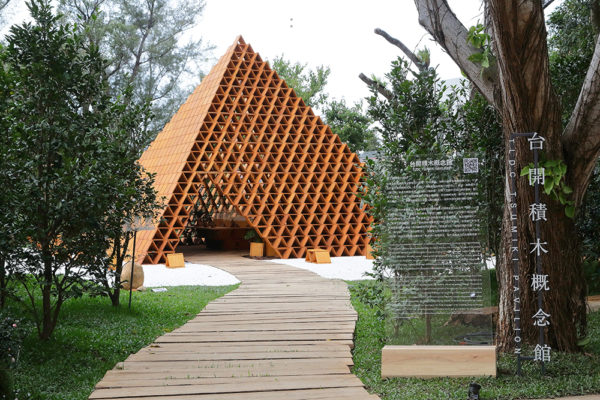 This is a mobile pavilion assembled from 400mm tsumiki designed for the 2018 Flower Expo in Taichung. We wanted this structure to be a prototype of “democratic” architecture, in which ordinary people can take part in its construction. By combining the tsumiki, we can build small items such as chairs … Read More
This is a mobile pavilion assembled from 400mm tsumiki designed for the 2018 Flower Expo in Taichung. We wanted this structure to be a prototype of “democratic” architecture, in which ordinary people can take part in its construction. By combining the tsumiki, we can build small items such as chairs … Read MoreProjectsStarbucks Hualienbay Store
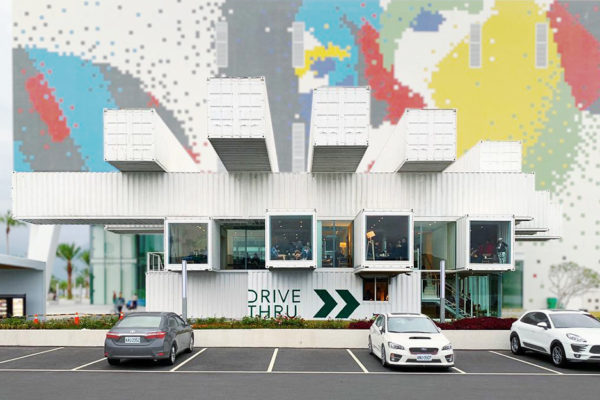 We designed a mobile café with recycled containers in Hualien, a spot popular for sightseeing in Taiwan. We stack up the 40 foot containers to a height of four levels, by staggering in the angle of 90 degrees to create a transparent building like a tall tree. Since they are stacked in a rotating pat … Read More
We designed a mobile café with recycled containers in Hualien, a spot popular for sightseeing in Taiwan. We stack up the 40 foot containers to a height of four levels, by staggering in the angle of 90 degrees to create a transparent building like a tall tree. Since they are stacked in a rotating pat … Read MoreProjectsTakagi Gakuen Kindergarten
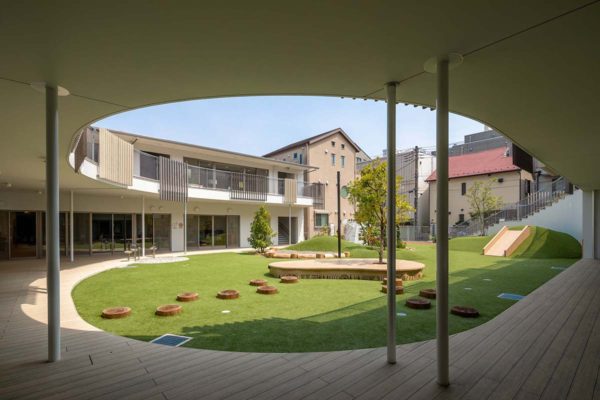 In collaboration with art director Chie Morimoto, we designed a kindergarten without divisions between architecture, graphics, and art: giving the space a fun and happy atmosphere. Morimoto’s pictures are printed all over wall as if to fuse dream and reality – this is a wondrous space for children w … Read More
In collaboration with art director Chie Morimoto, we designed a kindergarten without divisions between architecture, graphics, and art: giving the space a fun and happy atmosphere. Morimoto’s pictures are printed all over wall as if to fuse dream and reality – this is a wondrous space for children w … Read MoreProjectsHarmonica Amami
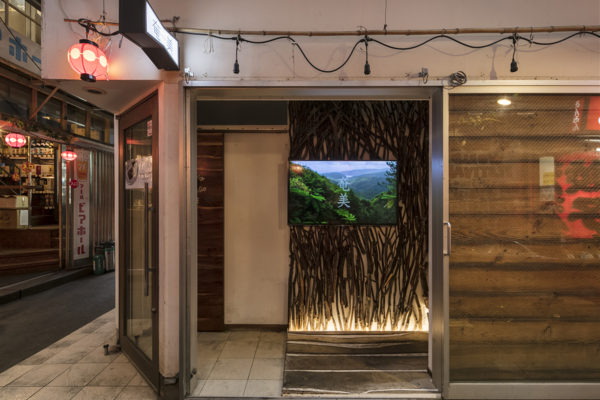 We designed a specialty shop for local products from Amami Oshima island. The banyan trees which are native to the island have peculiar and complicated aerial roots which look as if they are tying the branches to the ground. We drew inspiration from the banyan and tried to create a thick and dense s … Read More
We designed a specialty shop for local products from Amami Oshima island. The banyan trees which are native to the island have peculiar and complicated aerial roots which look as if they are tying the branches to the ground. We drew inspiration from the banyan and tried to create a thick and dense s … Read MoreProjectsSunnyhills’ Apple
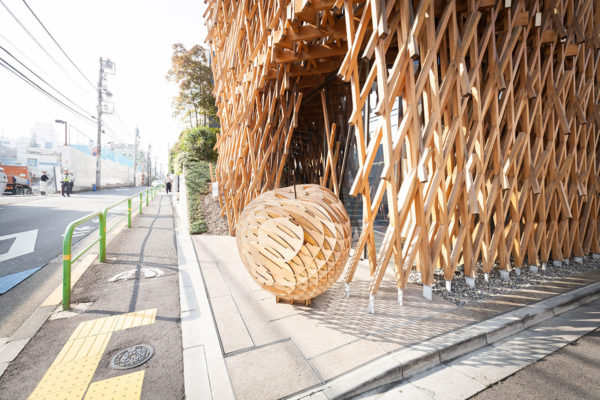 Sunny Hills, the KKAA-designed shop selling pineapple cakes, recently launched their new apple cakes. As a way of promoting, we designed wooden furniture, fixtures and signs with the help of the latest parametric design tools. The shop has the characteristics of cloud-like structure made of thin woo … Read More
Sunny Hills, the KKAA-designed shop selling pineapple cakes, recently launched their new apple cakes. As a way of promoting, we designed wooden furniture, fixtures and signs with the help of the latest parametric design tools. The shop has the characteristics of cloud-like structure made of thin woo … Read More